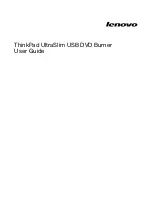
Diagnostics Optimization CT MODBUS RTU Technical Data
348
E300 Design Guide
Issue Number: 1
2. It is possible to increase
Final Current Loop Kp
(
J29
) to reduce the response time of the current controllers. If
Final Current Loop Kp
(
J29
) is
increased by a factor of 1.5 then the response to a step change of reference will give 12.5% overshoot. It is recommended that
Final Current Loop
Ki
(
J30
) is increased in preference to
Final Current Loop Kp
(
J29
).
As already stated, the drive compensates for changes of switching frequency and the sampling method used by the controller. The table below shows
the adjustment applied to the proportional and integral gains.
The amount of acoustic noise produced in the motor from position feedback quantisation is related to the resolution of the position feedback and the
product of the speed controller and current controller proportional gains. The values in this table can be used in conjunction with the speed controller
loop proportional gain to assess the amount of acoustic noise that is likely to be produced.
High performance mode
High performance mode gives fast closed-loop dynamic performance as though the proportional gain has been set to the maximum value defined
below. This is the maximum value that should be used to prevent excessive over-shoot or instability. It should be noted that this is 5 times the
maximum value used for standard mode.
Final Current Loop Kp
(
J29
) = (L / T) x (I
fs
/ V
fs
) x 256 = K x L x Kc x 5
The closed-loop dynamic performance defines the response of the current controllers to a change of current reference. This response cannot be
changed by modifying
, Final Current Loop Kp
(
J29
), however the ability of the current controllers to reject voltage disturbances is affected by
Final
Current Loop Kp
(
J29
). Normally the auto-tuned value (which is one fifth of the maximum recommended value) will give good rejection of voltage
disturbances, but the proportional gain can be increased up to the maximum value to improve this. It should be noted that the higher closed-loop
response of the controllers means that encoder position quantisation will cause significant acoustic noise in the motor unless a high resolution
encoder is used. Increasing
, Final Current Loop Kp
(
J29
) also increases acoustic noise due to noise on the current feedback. High performance
mode uses the measured motor resistance and inductance, and so it is recommended that these are obtained with auto-tuning using test 1 or 2.
The integral gain provides a trim on the currents, and generally the auto-tuned value should be sufficient, however, this may be increased if required.
The drive compensates for changes of switching frequency used by the controller. The table below shows the adjustment applied to the proportional
and integral gains.
See
Final Current Loop Kp
(
J29
).
Switching Frequency
(L80)
Current controller sample
time Current
Final Current Loop Kp
(J29) adjustment
Final Current Loop Ki
(J30)
adjustment
2 kHz
250
μ
s
x 167 / 250 = 0.7
x 1.0
3 kHz
167
μ
s
x 167 / 167 = 1.0
x 1.0
4 kHz
125
μ
s
x 167 / 125 = 1.3
x 1.0
6 kHz
83
μ
s
x 167 / 83 = 2.0
x 1.0
8 kHz
62.5
μ
s
x 167 / 62.5 = 2.7
x 1.0
12 kHz
83
μ
s
x (167 / 83) x (4 / 3) = 2.7
x 4 / 3 = 1.3
16 kHz
62.5
μ
s
x (167 / 62.5) x (4 / 3) = 3.6
x 4 / 3 = 1.3
Switching Frequency
(L80)
Current controller sample
time Current
Final Current Loop Kp
(J29) adjustment
Final Current Loop Ki
(J30)
adjustment
2 kHz
500
μ
s
x 167 / 500 = 0.3
x 1.0
3 kHz
333
μ
s
x 167 / 333 = 0.5
x 1.0
4 kHz
250
μ
s
x 167 / 250 = 0.7
x 1.0
6 kHz
167
μ
s
x 167 / 167 = 1.0
x 1.0
8 kHz
125
μ
s
x 167 / 125 = 1.3
x 1.0
12 kHz
83
μ
s
x 167 / 83 = 2.0
x 1.0
16 kHz
62.5
μ
s
x 167 / 62.5 = 2.7
x 1.0
J30
Final Current Loop Ki
Mode
Open-Loop, RFC-A, RFC-S
Minimum
0
Maximum
30000
Default
2000
Units
Type
16 Bit User Save
Update Rate
Background read
Display Format
Standard
Decimal Places
0
Coding
RW
Содержание 03200106
Страница 490: ...0479 0024 01 ...
















































